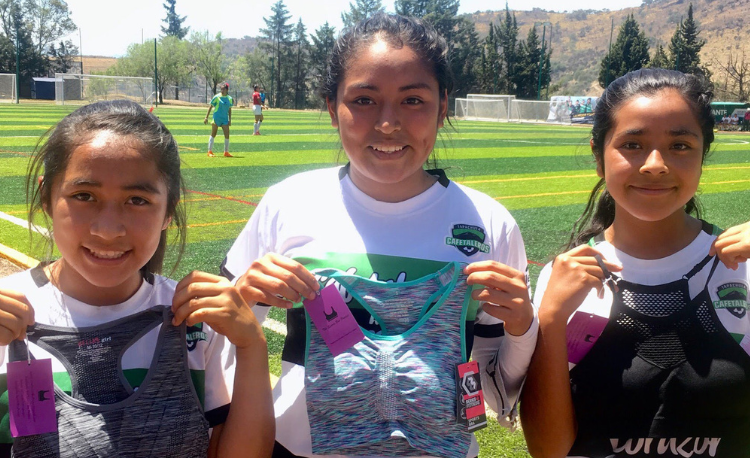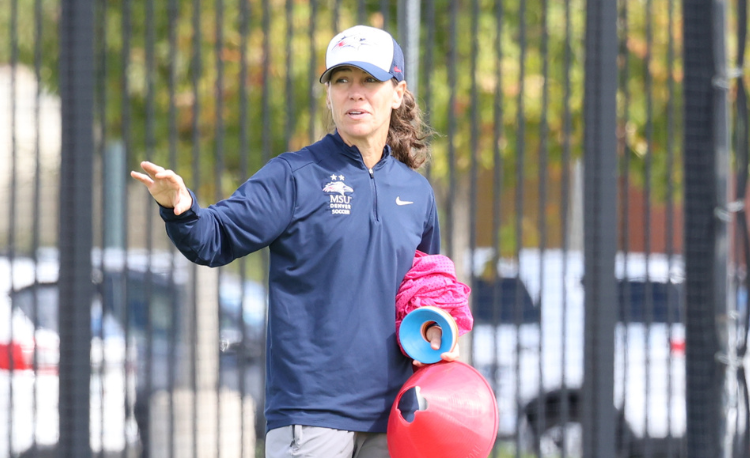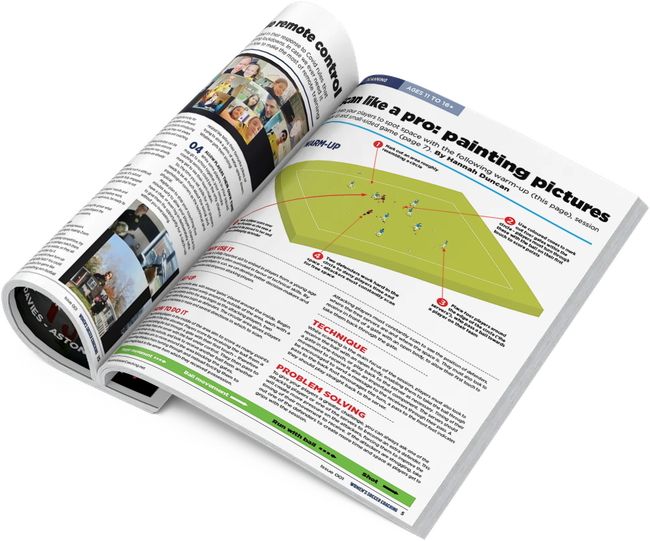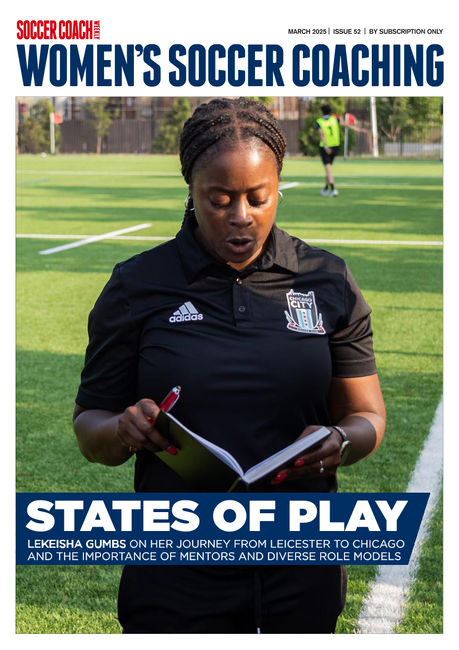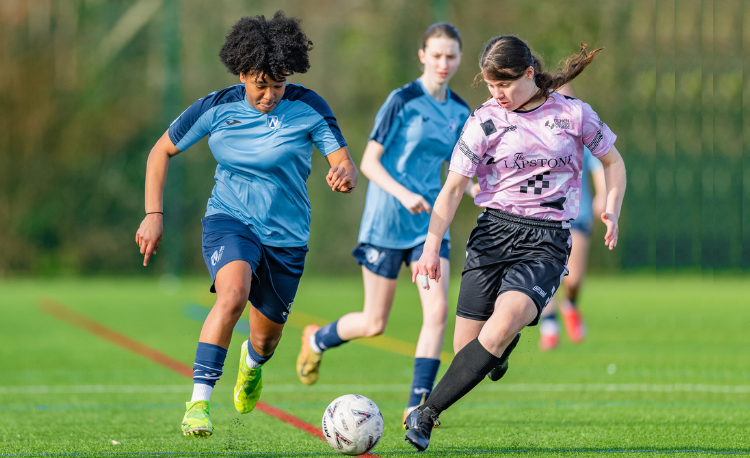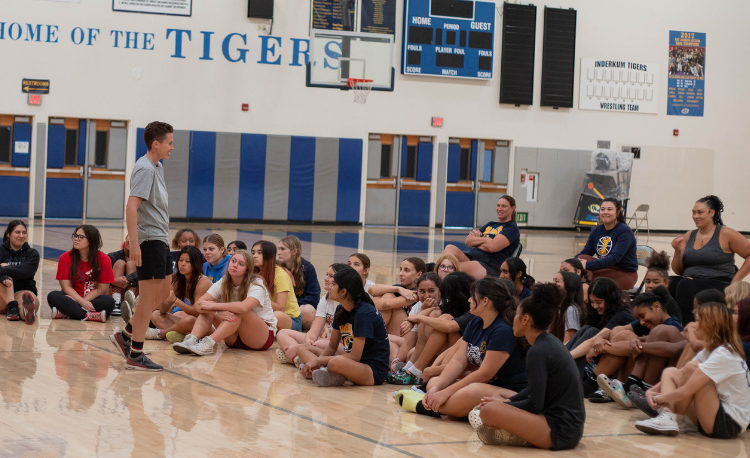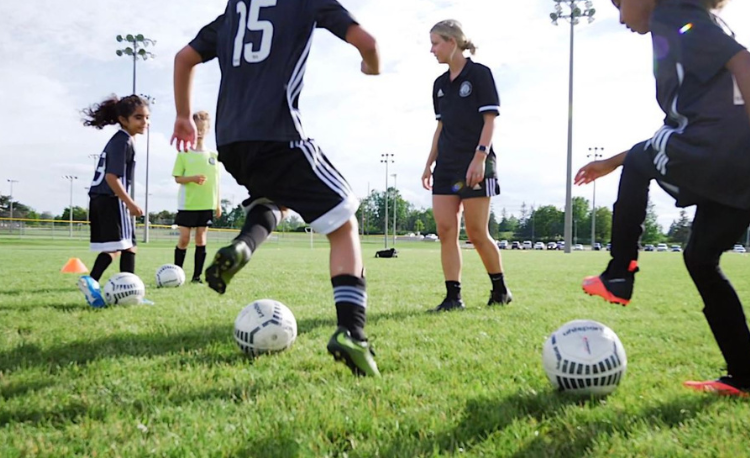You are viewing
1 of your 3 free articles
How to start conversations about breast health with your players
From getting the right gear and busting myths, to being a powerful role model, Claire Farnbank-Harrop provides tips for starting wellbeing discussions.
As coaches, our role extends beyond just strategy and fitness drills – we have the power to influence our athletes’ wellbeing, including an often overlooked topic: breast health.
A sports bra is the most crucial piece of workout gear for those with breasts, yet 90% of women are wearing the wrong size.
So, let’s dive in with these six tips to raise awareness of breast health and normalise conversations among your players and coaching staff...
01 The importance of the right sports bra
First things first: let’s talk about sports bras.
Choosing the right one isn’t just about avoiding a wardrobe malfunction; it’s about support.
A well-fitted sports bra can significantly reduce discomfort during high-impact activities. Research suggests that many athletes aren’t wearing the correct size or style, which can lead to both physical discomfort and long-term health issues.
Encourage your players to get fitted – it’s the first step to ensuring their chests are properly secured while they score, or prevent, goals.
02 Check yourself before you wreck yourself
Self-exams might seem awkward, but they are crucial for breast health.
Encourage your players to perform these monthly. Schedule a team health talk with a medical professional to demonstrate proper techniques.
Think of it as another skill to master, like perfecting a penalty kick – this one, however, could save lives.
03 Myth busters: breast health edition
There are plenty of misconceptions about breast health, especially regarding exercise.
Some athletes worry that being active may increase their cancer risk. The truth? Regular physical activity is linked to a lower risk of several cancers, including breast cancer.
Use this opportunity to educate your players and dispel any myths that might be floating around. Remember: knowledge is power, and a well-informed athlete is a confident athlete.
04 Kick off the conversation
Create a culture of openness, where athletes feel safe discussing health issues, including breast health.
Normalise the conversation by sharing your own health practices and experiences. If they can discuss the latest match highlights, they can certainly chat about their health, too.
Leading by example can be a game-changer.
05 Be aware of body changes
Encourage your players to be aware of their bodies, and any changes that might occur.
If they notice anything unusual – like lumps, or changes in size – it is essential to seek medical advice.
Remind them that proactive health measures are just as important as practising their set plays. After all, the best offense is a good defense!
06 Be the captain of health
Don’t just talk the talk; walk the walk! Share your own health experiences and encourage open discussions during team meetings.
By mentioning your latest health check, or how you prioritise your breast health, you set a powerful example for your athletes.
Just as a captain leads by example on the pitch, your proactive approach can inspire your players to take their wellbeing seriously.
Remember, it’s all about creating an environment where health is part of the game plan, allowing everyone to feel supported and empowered.
By weaving these tips into your coaching, you become a vital advocate for breast health awareness among your athletes.
It’s important to remember that, while winning games is exciting, the ultimate goal is to ensure that our players are healthy, confident, and well-supported.
By fostering an environment that prioritises health, you empower your team to excel both on the field and in life.
So, let’s celebrate those victories – both on the field and in the wellbeing of our athletes.
Related Files
Newsletter Sign Up
Newsletter Sign Up
Discover the simple way to become a more effective, more successful soccer coach
In a recent survey 89% of subscribers said Women's Soccer Coaching makes them more confident, 91% said Women's Soccer Coaching makes them a more effective coach and 93% said Women's Soccer Coaching makes them more inspired.
*includes 3 coaching manuals
Get Inspired
All the latest techniques and approaches
Women's Soccer Coaching offers proven and easy to use soccer drills, coaching sessions, practice plans, small-sided games, warm-ups, training tips and advice.
We've been at the cutting edge of soccer coaching since we launched Soccer Coach Weekly in 2007, creating resources for the grassroots youth coach, following best practice from around the world and insights from the professional game.
